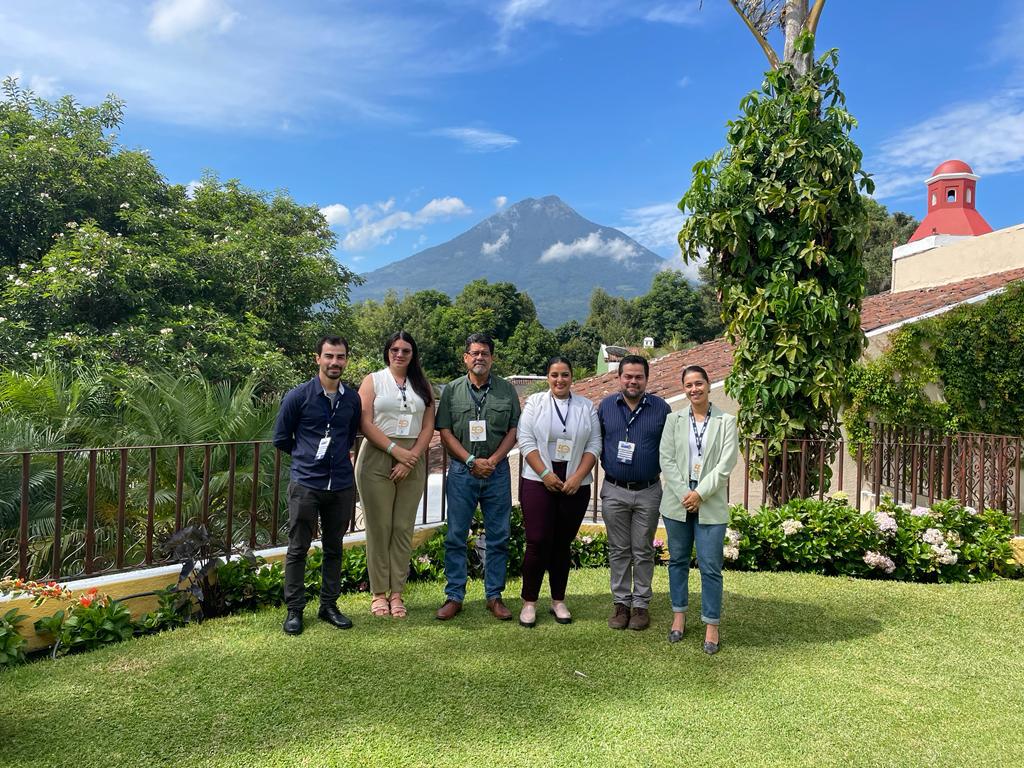
Climate change is negatively impacting people and ecosystems across the globe, but some of its harshest effects are being felt in Central America and the Caribbean. High temperatures, more frequent and severe weather events, and decreased crop yields have destabilized incomes and food supplies in Central America: between 2018-2021, the number of food-insecure people in the region almost quadrupled. To mitigate some of those impacts, researchers associated with the Feed the Future Innovation Lab for Crop Improvement (ILCI) are racing to breed new varieties and test alternative crops that can better tolerate extreme heat and drought.
Researchers with ILCI’s Central American and Caribbean Crop Improvement Alliance (CACCIA) are sequencing the genomes of bean and sorghum varieties to find those most capable of enduring high temperatures, and they’re working with farmers to test sorghum as an alternative livestock feed; sorghum is roughly as nutritious as corn but requires far less water to grow. The researchers presented their findings June 26-30 at the Programa Cooperativo Centroamericano en Cultivos y Animales – one of the oldest and most prestigious scientific conferences in Mesoamerica.
Beans are the second most important agricultural product in Costa Rica’s domestic market, and cattle production uses more than 20% of the territory of Costa Rica, said Luis A. Sánchez, an agricultural economist and CACCIA priority setting leader at INTA.
“Through CACCIA, technologies are being developed to promote the resilience of these production systems, which has a very important impact on the country’s food security, the rural economy and the environment,” Sánchez said.
Some of the ILCI researchers presenting at the conference were:
-
- Joyce Estrada Gamboa, a biotechnologist with the Instituto Nacional de Innovación y Transferencia en Tecnología Agropecuaria (INTA), is leading projects to identify promising varieties of beans and sorghum. She and her colleagues assessed the genetic diversity of distinct breeding lines and cultivars, looking in particular for indications that plants could tolerate heat and drought. Gamboa and her colleagues have mapped genetic diversity among 282 common bean lines and 188 sorghum lines. Their work will be used to choose promising parental lines for plant breeding trials.
-
- Manuel Solano Sibaja and Juan Carlos Hernandez, bean breeders at INTA, are evaluating common beans for tolerance to high temperatures by working collaboratively with growers in Costa Rica. In 2015, an El Niño year, farmers reported wilting flowers and poorly filled bean pods that dramatically reduced yields. Between human-caused climate change and the natural El Niño cycle – which also increases temperatures, causes severe weather events and is expected to begin again in 2023 – farmers need heat-tolerant bean varieties. Solano and Hernandez started with 60 lines believed to be adapted to high temperatures and conducted breeding trials with six of them in Quepos, Costa Rica. Four of the lines performed well and will undergo further study, in anticipation of release of new bean varieties.
-
- Agricultural economist Yoselyn Hernandez Chaves and her colleagues surveyed dairy and beef farmers along the Pacific Coast of Costa Rica about their use of and interest in sorghum as a feed source. Corn is the primary source of livestock grain throughout the Western Hemisphere, but sorghum can produce comparable yields with significantly less water, making it a potentially better option in drought-prone regions; however, corn is more digestible for livestock. Their surveys of 182 farmers found that 86% have never used sorghum as a livestock feed, though 91% would be interested in trying it. As impediments to using sorghum, farmers cited lack of knowledge and training about the crop, and difficulty accessing seed.
-
- Sorghum breeder Josselyne Aguilar López and her colleagues conducted planting trials of eight new sorghum lines as an alternative livestock feed. She and her team grew the lines over two seasons in five planting locations across Costa Rica, then characterized their yield, nutritional quality, adaptability and digestibility by livestock. One especially promising line, Sorgo Sureño, produced yields almost 50% higher than the commercially available Black Sorghum variety.
Costa Rica will host the next LXVI PCCMCA Annual Meeting, which will take place next year. The event will be organized jointly by INTA and Ministry of Agriculture and Livestock.
“It is an honor for Costa Rica to host the PCCMCA 2024 Annual Meeting,” said Roberto Camacho, executive director of INTA and CACCIA principal scientist in Costa Rica. “We encourage INTA researchers and the agricultural sector in general to participate in this important meeting by sharing the research results. This space will promote learning and knowledge exchange, and technological innovations for our agricultural sector,.”

For press inquiries or for more information, email us ilci@cornell.edu.
This article is made possible by the generous support of the American people through the United States Agency for International Development (USAID). The contents are the responsibility of the Feed the Future Innovation Lab for Crop Improvement and do not necessarily reflect the views of USAID or the United States Government.



